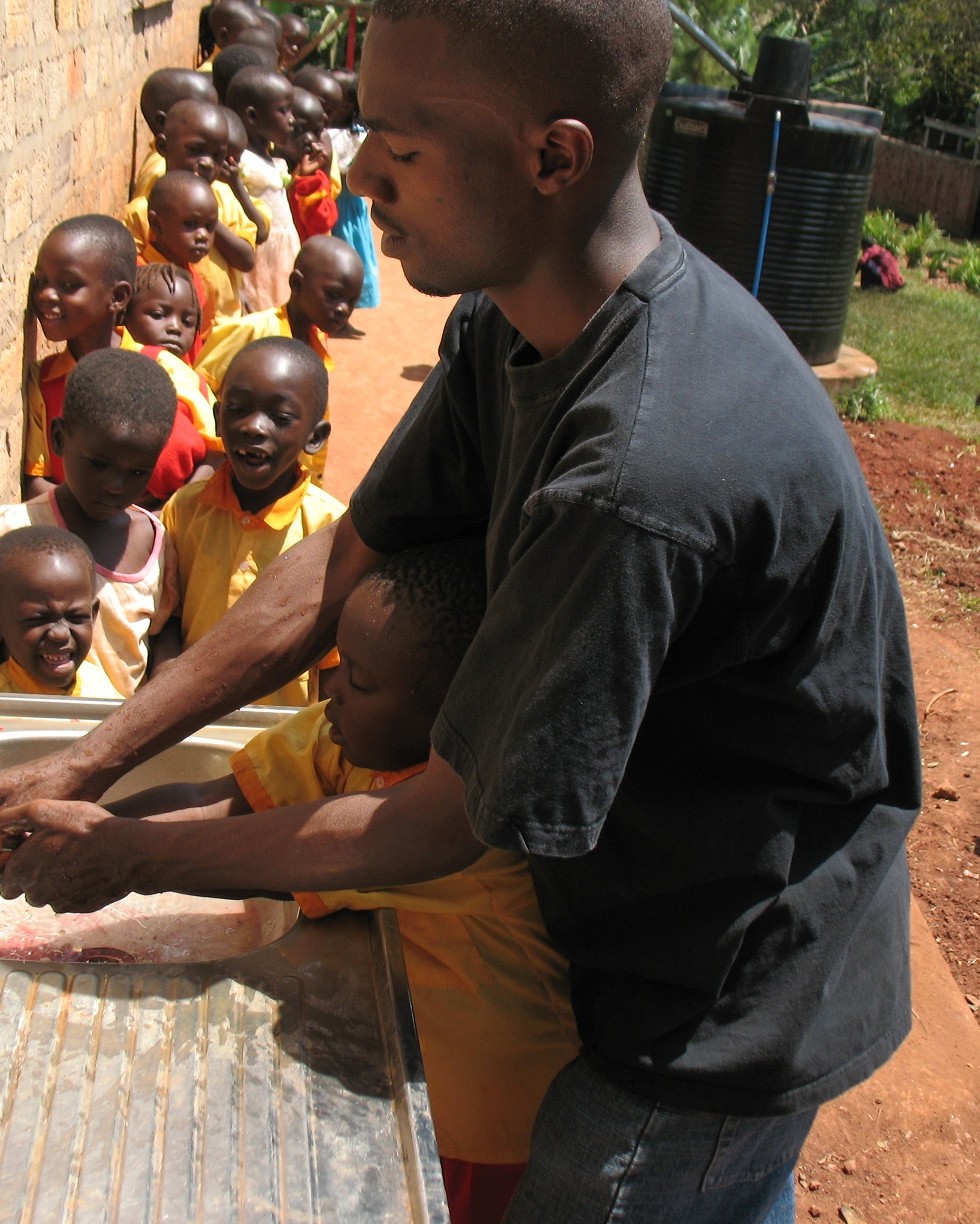The waterpump
In July 2009 Krista and Robert travelled to Banda to install the pump. The first discussion with Steven and Roger, the Weebale contacts in Banda, took place in a vanilla works near a nursery school. Steven told he was glad so much was being done for the pump in the Netherlands and he thanked the sponsors for their contributions. “The pump can be installed in five weeks”, Steven said. We did not agree, for in the meantime we had understood that the word time is used differently in Uganda from the way it is used in the Netherlands.
“It should be realised in three weeks”, we answered, “for we want to be sure the pump works before we leave for the Netherlands”.
Steven and Roger agreed to this. We shook hands and could start.
Near the school we went down the hill to the brook. Here the pump had to be installed to push the water upwards. A forty-centimetre ditch had to be dug for the water pipe and the electric cable along more than 250 metres.
“How are you going to dig this ditch?” we asked Roger. “I will ask parents, children, villagers and people from the community to meet; we will discuss the project and ask them for help”.
The next morning there were many volunteers, fathers and mothers of toddlers, to discuss the water pump project. Roger introduced Krista and Robert and we told why we were there. “We have raised money in the Netherlands and thanks to many contributions from friends, acquaintances, relations and businessmen we have sufficient money to install the pump for the school. We cannot do this on our own, we need your help”. The people applauded and they all offered their cooperation. Still a bit prejudiced we thought: “we will see” and we arranged with Roger to come back the next day to watch the digging. The digging takes most time. The installation of pipes and cables can be done in a short time by a plumber and an electrician. When we arrived at the schoolyard the next day, we were enormously surprised. On top of the hill five men and women were at work. Further down, where the pump would be installed, almost 25 people – women, children and some men – were digging in a row, singing and laughing. Within three days the whole ditch was ready. Roger received the necessary money, in Ugandan shillings, to pay the diggers for their work.
The next stage started. With the budget in front of us we counted how many water pipes, couplings included, and how many electric cables and conduits had to be bought and when. ”Tomorrow in Kampala”, they said, “Then we will come along”, we decided. We looked at a pump in a well-known English firm in Africa, Davis & Shirtliff. The pump cost 1.700.000 UGX (Ugandan shillings), about € 590, whereas the budget said 180,000 UGX (€ 65).This was a problem. It was decided to send a technician to the site to ascertain what kind of pump was really necessary and the technician advised a simpler pump of only 400.000 UGX (€ 140). We agreed.
The reason why we wanted to be so much involved in the acquisition of the materials was that we wanted to spend the donated euros as well as possible. Sometimes donated money is not spent on the project, but disappears into the pockets of others. The Weebale Foundation does not want any rake-off.
The materials were bought, the muzungos, we whites, paid and the materials were transported by lorry to Banda, about one hour and a half from Kampala. When paying we realised that we could only do this owing to all the generous donations.
The next day people started to install the water pipes under the supervision of Frank, the plumber.
Within three days all the pipes had been installed. The well from which the water would be pumped, was dug out three metres. Heavy concrete sewage pipes were put on top of each other and roundabout these many big rocks, smaller stones and sand, a lot of sand. In this way a natural filter was created and relatively clean water could be pumped up and flow from the tap. The pump was being tested. Full of suspense everybody waited for the moment the soft humming of the pump would be audible. The electrician was standing at the big tank and reported by phone to the plumber, that water was coming from the tube. Parents, diggers, children and teachers applauded. At a speed of 1,000 litres per hour three big storage tanks were filled. The pump stopped automatically, when the tanks were full. Carefully Roger tried the tap at the washbasin hanging from the school wall. Yes, it produced spluttering, splashing brown water that gradually became lighter. The pump actually worked! Everyone was delighted.
It is a great experience for two Dutchmen to see how pleased everyone is to be able to get water from a tap in the kitchen. The cook does not need to walk many metres, several times a day, to get water from a river. The next day the children were queuing just like every day to wash their hands before their meal. The good old blue plastic tank was put aside and the tap was opened. Laughing, splashing each other with water, the children washed their hands and faces. For once no attention was paid to the waste of water; playing joyfully with water was possible now.

